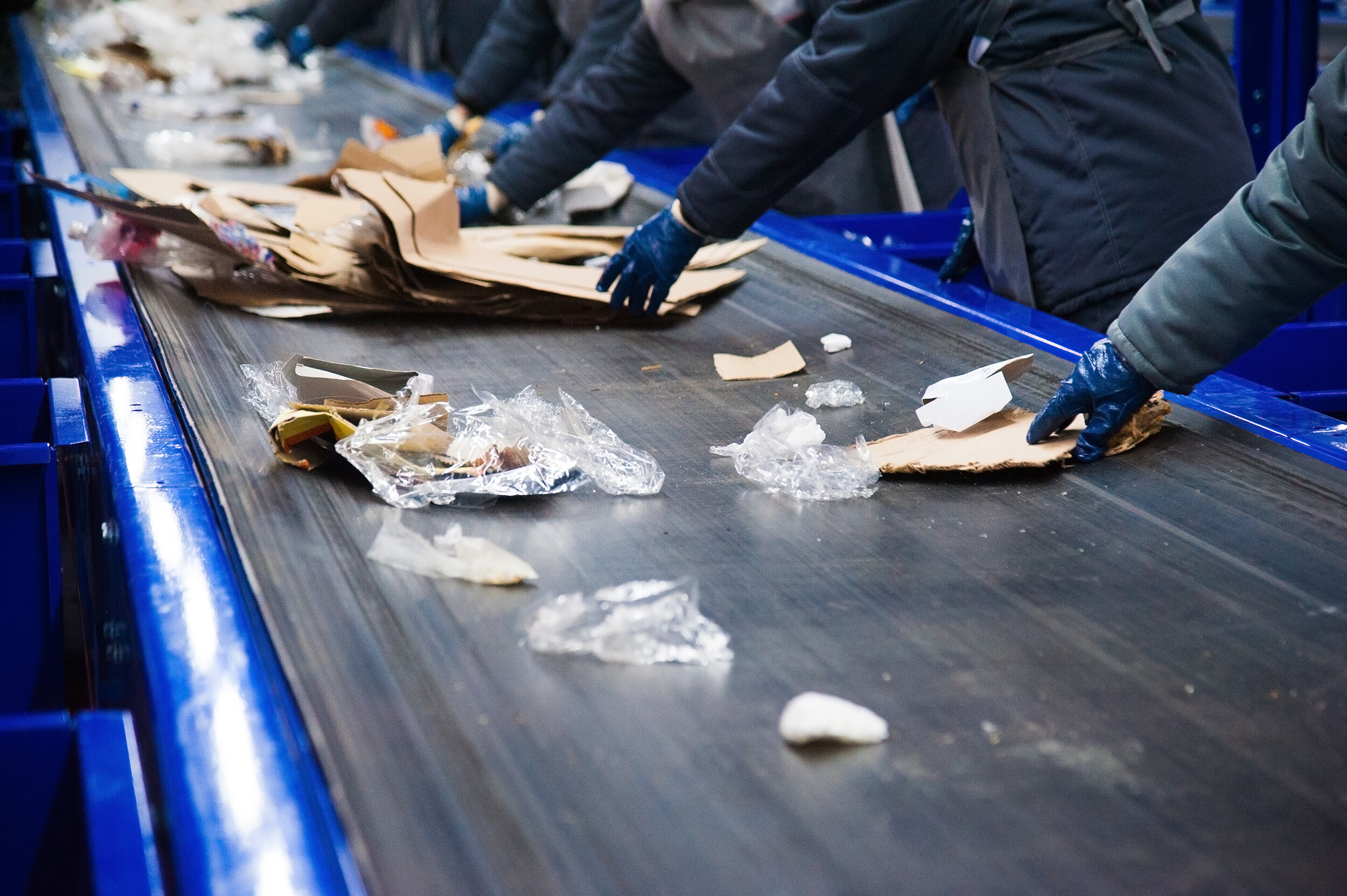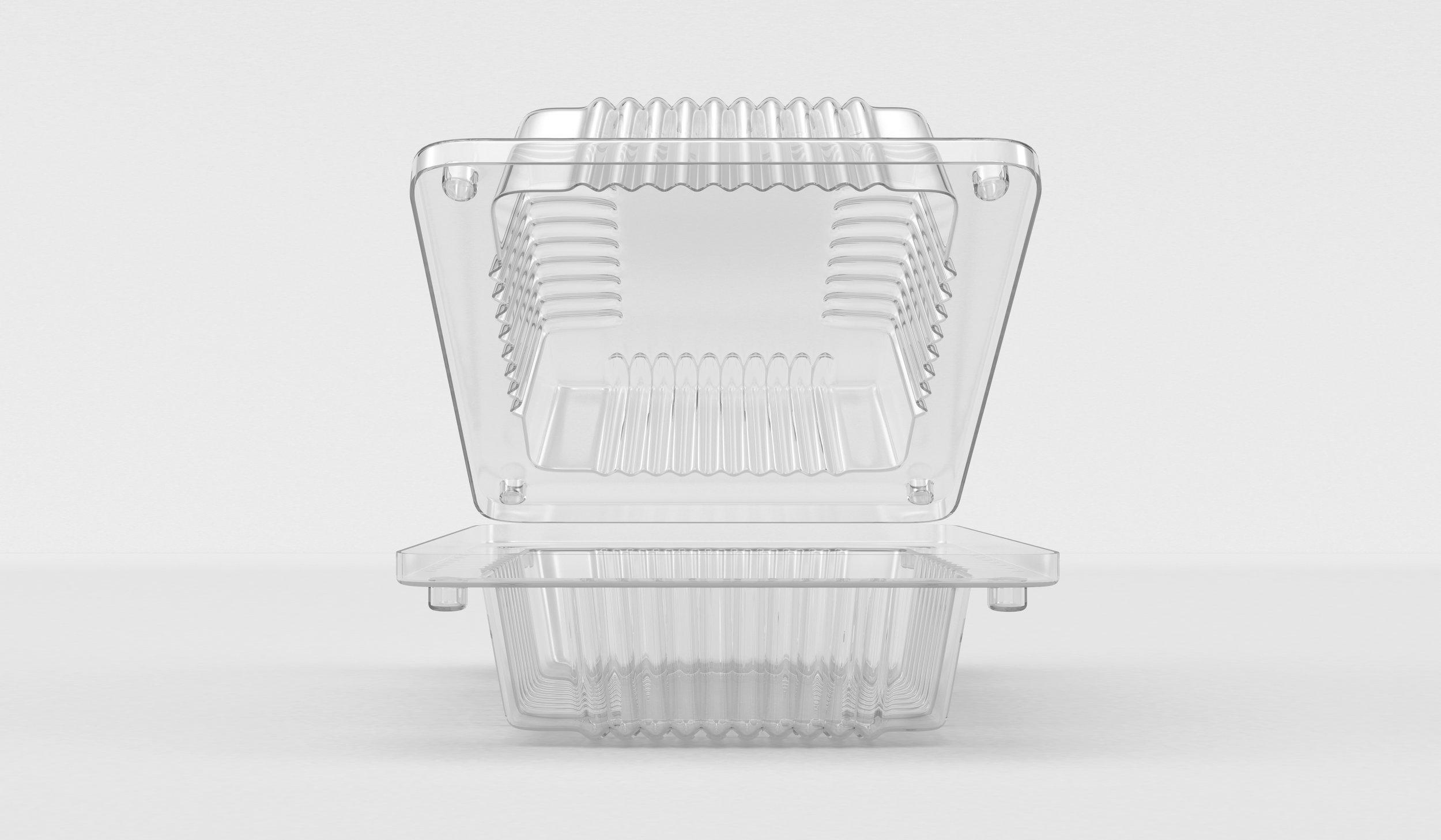
Materials Recovery Facilities
Use the tabs below to explore resources, case studies, and more.
Introduction
Many MRFs throughout the U.S. and Canada are successfully recovering foodservice packaging, although the specific material and packaging types recovered vary greatly.
As MRFs consider accepting foodservice packaging, it is important to have an idea of how much material this will generate. In a city of 250,000 people, roughly 3,000 tons of cups, containers, boxes and paper bags are generated annually. About 75% of this material is fiber. That means that at a ten percent recovery rate – which is a realistic initial goal for new materials – a MRF could expect an additional 300 or so tons of recoverable material each year, consisting of approximately 230 tons of paper and 70 tons of plastic.
In addition to MRFs, plastic recovery facilities (PRFs), can also be a component in recycling plastic foodservice packaging. PRFs purchase mixed plastics or pre-picked (#3-7) bales from MRFs, which may include PET, PP, PS and PLA cups and containers. Utilizing cutting-edge sorting technologies, such as optical and gravity sorting, PRFs are able to successfully produce segregated resins, which are often sold domestically to plastic reclaimers. For PRFs, it’s interesting to note a recent study of cups found in mixed plastics bales revealed:
Cups made up roughly 6% of the sampled pre-picked bales.
Polypropylene was the most prevalent cup material type in all the bales sampled.
Finally, secondary processing facilities are another option to recycle foodservice packaging that may not have been sorted in a MRF. These operations typically buy residue and remainders from MRFs’ conveyor belts and further sort the material to recover and sell paper, plastics, metals, etc.
Resources
Recording of the January 2025 FPI webinar featuring industry, community, and composter representatives who are including compostable packaging in residential composting programs.
Recording of the October 2024 FPI webinar featuring industry, MRF, and material processor representatives who are recycling plastic-based cup and container takeout packaging.
This study examines the diversity of existing residential curbside collection programs for food scraps and compostable packaging. FPI analyzed eight exemplary programs to gain a deeper understanding of their key features, identify the main challenges they face, and highlight their successful strategies.
Recording of the July 2024 FPI webinar featuring MRF, paper mill, and community representatives who are recycling pizza boxes, paper cups, and other paper-based takeout packaging.
In December 2023, FPI held a webinar that shared information on the effect of images, language and special instructions related to recycling take-out containers. We also learned about best practices and tools, and heard real-world examples of resident education from communities and haulers.
FPI released a summary of findings from its Resident Messaging Survey, sharing information related to resident assumptions on recyclability, awareness of what items can be recycled, and top sources of recycling instructions. The survey focused on recycling messaging related to take-out items such as plastic cups and containers, paper cups and pizza boxes.
Webinar shared several FPI-supported studies including recovery of PET thermoforms, PP cups, paper cups, and the impact of food residue on take-out packaging recycling.
A food residue study was conducted in November 2022 to learn whether foodservice packaging (such as take-out containers, cups or pizza boxes) set out for recycling were more contaminated than food contact packaging (such as peanut butter jars, cans or pasta boxes). This study served as a follow-up to two previous food residue studies.
This webinar recording focused on the FPI community partnership program that works to add a suite of foodservice packaging to curbside recycling and/or composting programs in vetted communities. The panelists walked through the partnership approach, shared resources available to communities, and provided real-world collaboration stories from actual community partners.
The number of mills accepting paper cups is growing. Check out our list of confirmed markets for paper cups across North America.
As part of the most comprehensive post-consumer plastic container bale sorts done in North Amercia, this plastic cups bale sort study conducted in 2015 showed which rigid plastic bales contained plastic cups as well as the plastic resin types and volumes of plastic cups in each bale type.
To get a better idea of the current acceptance of FSP by cities and/or MRFs in the U.S. and Canada, a benchmarking study was conducted in 2013. While the responses varied widely, the results were encouraging.
To test the impact of paper foodservice packaging in mixed paper bales, a bale audit was conducted with bales purchased from New York City and Seattle markets.
To build on knowledge gained during prior studies, FPI participated in an audit to obtain a current snapshot of the prevalence of plastic cups in #3-#7 bales.
Adding foodservice packaging to existing bales makes very little difference to their composition. Learn more about the estimated prevalence of FSP in bales.
FPI, along with its co-sponsors, the American Chemistry Council, Association of Postconsumer Plastic Recyclers, Carton Council and National Association for PET Container Resources, conducted a study to analyze the flow of select materials through a MRF and identify best practices to get more recyclables actually recycled.
In 2021, a group of prominent paper mills and end markets signed a declaration of acceptance and a commitment to increasing recycling of paper cups.
Read more
For MRFs to accept materials, there must be end markets! Explore an interactive map of end markets for a variety of foodservice packaging materials.
Explore our go-to information sheet to understand the basics of foodservice packaging recovery that every community or MRF should know.
Some communities have expressed concern about adding foodservice packaging to a recycling program because of food residue. But, two recent studies have shown that foodservice packaging is no more contaminated with food than other commonly recycled food-contact items like bottles, jars or cans. View the webinar on this topic for more information.
Some communities have expressed concern about adding foodservice packaging to a recycling program because of food residue. But, two recent studies have shown that foodservice packaging is no more contaminated with food than other commonly recycled food-contact items like bottles, jars or cans.
Markets for postconsumer polypropylene are on the rise. Read more about polypropylene recovery and end market demand for this resin.
A new white paper, authored by Moore & Associates, delves into the evolving landscape of paper cup recovery efforts in the U.S. and Canada including recycling challenges, technical aspects of material sorting and processing, and end markets utilizing recovered cups.























